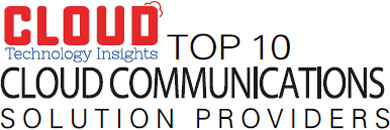The shift to multi-cloud strategies and even plain migration alone can add new levels of IT complexities. Out of which refactoring and repatriation are raising grave apprehensions
Fremont, CA: When it comes to migrating applications to the public cloud, IT teams are facing two different but interlinked issues that add costs and complexity: refactoring and repatriation.
Refactoring is a process of rewriting application code to make it cloud-ready; it ideally includes updating the overall application architecture, APIs, and integrations with storage, compute, and network resources. Refactoring equips legacy apps with the characteristics of cloud-native apps, making it more feasible for the developers to utilize the latest tools such as containers and microservices.
 Repatriation is the method of pulling back applications to the data center from the cloud. Since the applications are in the cloud, pulling them back will create concerns related to the operating costs, cloud-based workload performance, security and compliance, availability, and changing business needs.
Repatriation is the method of pulling back applications to the data center from the cloud. Since the applications are in the cloud, pulling them back will create concerns related to the operating costs, cloud-based workload performance, security and compliance, availability, and changing business needs.
Avoiding Refactoring:
Other than increasing IT risks, refactoring costs time and money. IT teams must verify the impact of refactoring on external applications and workloads. IT teams can avoid refactoring completely by lifting and shifting applications from the data center to the cloud. It also simplifies the migration process, decreases costs, and accelerates the move to the cloud.
IT teams can utilize pervasive automation to make lift and shift migration seamless by leveraging a cloud platform that skillfully integrates on-premises infrastructure with cloud management software. By adding VMware as a migration path, IT can also make the best of automation and intelligence to straighten out the processes involved while adding cloud-native capacities to legacy applications.
Avoiding Repatriation:
Repatriation is also best if avoided as it is too expensive and time-consuming. After spending money on migrating the app to the cloud, the company has to spend more money on repatriation of application. The process is time-consuming and needs careful monitoring. The cost of repatriation will vary from one application to another, one workload to another, and even depends on the characteristics of the company.
Simplifying the Migration Path:
The best way to tackle the costs and complexities of refactoring and repatriation is to conduct a thorough analysis of the applications and workloads before the migration begins. This analysis contains details such as the reason for which the organization is considering the cloud; what the application requirements and business goals are; do any interdependencies exist between each app and workload? How much the cost of migration is, once it is done, and while it is ongoing?, and so on.
Doing this analysis will help decide which application is better served by remaining on-premises, or incorporating public cloud services in a hybrid cloud model that encompasses a lift-and-shift migration. If the analysis determines that refactoring is required, it is still necessary to find the right path for migration and to avoid repatriation in the future..
Taking the Next Step:
Refactoring and repatriation are complicated issues, during cloud migration, especially for those organizations that don't have experience, knowledge, or resources to carry out the analysis necessary to make the best decision for the long term.
Cloud migration is crucial to digital transformation; it is essential for the future of any organization. Therefore, it is one of those times where considering the expertise of the partners can have a dramatic impact on the provision of your desired results.
see also: Top CISCO Solution Companies